Homegrown celery, Apium graveolens, is delicious. It’s nothing like the stringy, tasteless stalks you buy in the grocery store. But did you know there are a number of different cultivars available?
I wouldn’t blame someone for thinking that there are only one or two varieties of celery out there. I mean, they all look and taste the same, right?
Maybe not.
While each of the nine cultivars described below has that unmistakable savory flavor we associate with this vegetable, there are some differences between them.

We link to vendors to help you find relevant products. If you buy from one of our links, we may earn a commission.
There are heirloom types that have been grown for over a century, and hybrid varieties that have been bred to thrive in warmer climates or for improved disease resistance. Some are “self-blanching” and others require blanching in the garden if you want tender, mild-tasting stalks.
They can vary in color, too. From dark green to light, yellowish stalks – and there are even those with purple stalks!
A. graveolens is a member of the carrot, Apiaceae (or Umbelliferae), family and is most often grown as an annual in USDA Hardiness Zones 4-10.
Most cultivars do well in all of these growing zones, but the varieties that I’ve mentioned below as being better suited to warmer temperatures are more likely to thrive in Zones 8, 9, and 10.
Ready to find the perfect cultivar for your vegetable garden?
Let’s go!
Here’s what I’ll cover:
9 of the Best Celery Cultivars
1. Conquistador
If you need a cultivar that’ll march right through the growing season and produce early stalks, try ‘Conquistador.’
This hybrid of ‘Pascal’ matures in just 80 days in warmer areas, so it’s an excellent plant for the impatient gardeners of the world.
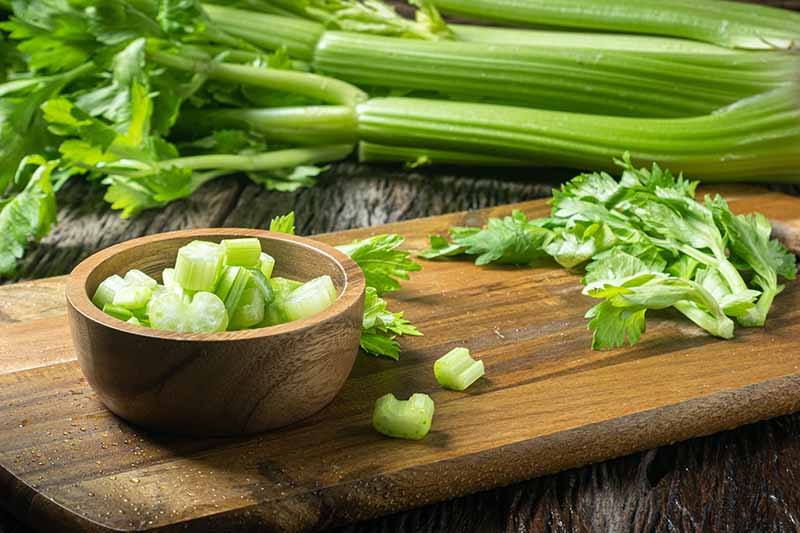
For those in cooler growing zones, you’ll have to wait about 115 days. Still not bad at all!
‘Conquistador’ is slow to bolt, and produces crisp, tasty upright stalks. It’s heat-resistant, and will even tolerate a little drought.
It’s not self-blanching so you’ll need to blanch this one yourself if you want pale, almost-white stalks. Or, if you’re like my husband, enjoy them un-blanched. Sometimes you just need a crunchy mouthful of that potent, unsubdued flavor.
2. Giant Red
‘Giant Red’ is an heirloom cultivar that dates from the 19th century.
With reddish purple stalks that turn a delicate pink color when cooked, this cold-hardy variety is popular in England.
The flavor is hearty, and a bit stronger than the green varieties. What a way to add both color and flavor to your cooking!
Make sure to reserve plenty of space for ‘Giant Red’ in your garden, as true to its name, it grows to a whopping two feet tall. Despite its height, this colorful cultivar matures in just 85 days.
3. Golden Pascal
‘Golden Pascal’ is an heirloom cultivar from France, also known as ‘Winter King’ or ‘Pascal Giant.’
Introduced to the US by Livingstone Seeds in 1913, this cultivar produces yellow-green, tender stalks up to 20 inches tall.

‘Golden Pascal’ is cold tolerant, and requires no blanching. Stringless, mild-flavored stalks are ready to harvest after 115 days.
You can find seeds available from Everwilde Farms via Amazon.
4. Golden Self-Blanching
This heirloom variety dates back to 1886, when it was introduced by Johnson and Stokes Seed Company.
For those who enjoy the flavor of celery but would rather not deal with blanching at home, ‘Golden Self-Blanching’ does the work for you.
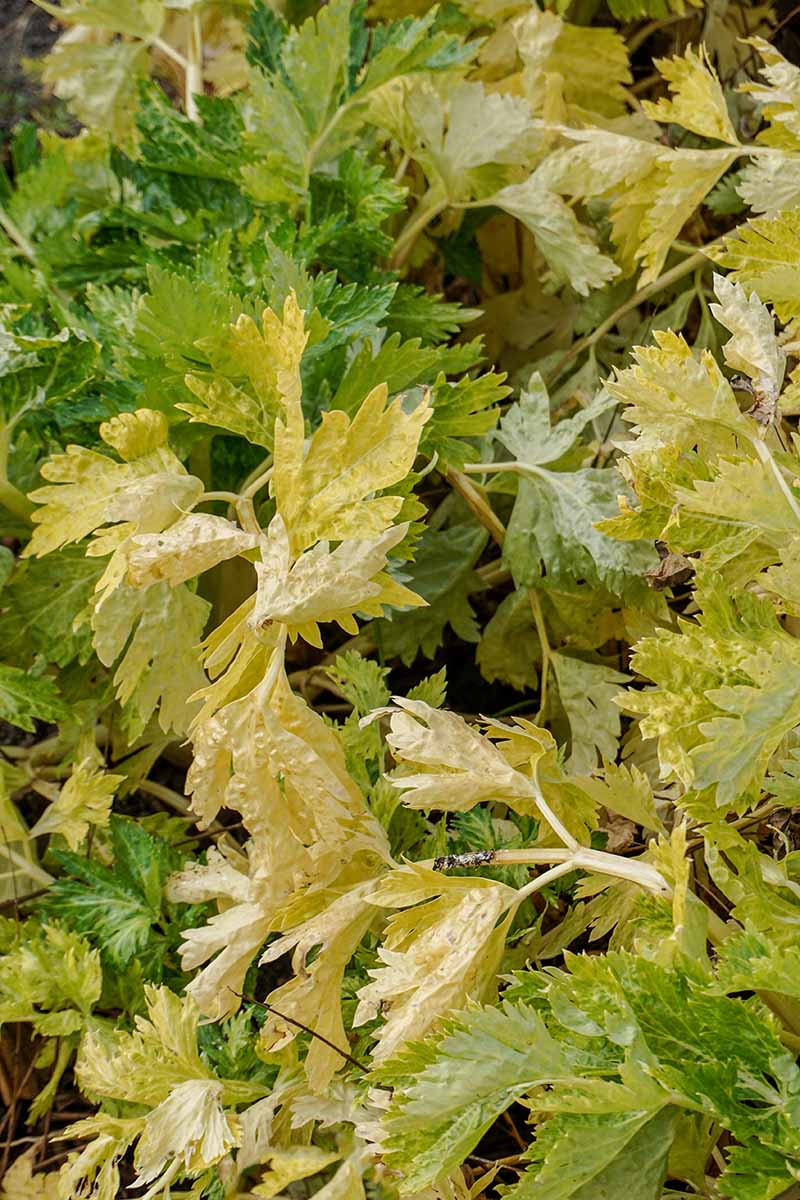
While the stalks remain a deep green color for much of the season, in the fall they begin to turn a beautiful golden color, signaling that the flavors are softening into a subdued but delicious crunch.
Thick, juicy stalks with deep ribs mature in about 105 days, and the plant grows to nearly two feet in height.
5. Monterey
‘Monterey’ is an early-maturing hybrid cultivar bred by Tozer Iberica in Spain. It’s bolt resistant and is perfectly suited to gardeners in warmer climates.
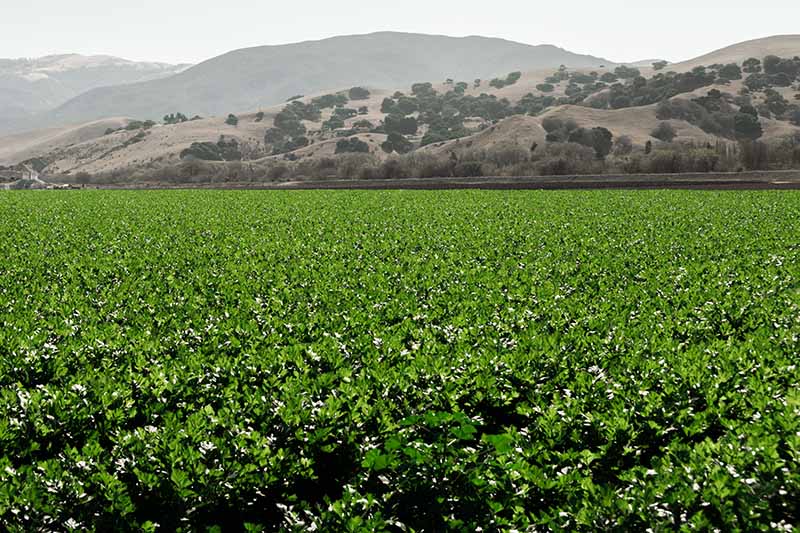
Grown commercially in southern Europe, ‘Monterey’ is the market leading variety in one of my favorite countries to visit: Spain.
A vigorous grower, with flavorful, dark-green 12-inch stalks ready to harvest in just 80 days.
6. Nan Ling Cutting
A. graveolens var. secalinum, also known as leaf or Chinese celery, is cultivated predominantly in east Asia.
Instead of growing large, thick, tight stalks, ‘Nan Ling Cutting’ grows thin, light-green stalks that you can cut from day 60 of growing through day 90.
Do you live in a growing zone with a short summer, like I do?
If so, this is a perfect cultivar for you. Plus, it delivers a delicate savory flavor in your Asian recipes, soups, and salads.
And don’t forget to toss the fragrant leaves into a salad, too!
Seeds are available in a variety of packet sizes from True Leaf Market.
7. Tall Utah
This popular heirloom variety was introduced to the market in 1953. ‘Tall Utah’ grows crisp, stringless 12-inch stalks.
It’s perfect for snacking on right out of the garden (with peanut butter or ranch, of course).
Of all the varieties, this one is my favorite for growing with my young son, since he actually eats it. It takes about 100-125 days to mature, depending on the temperature in your area.
You can find seed packets and even 1-pound sacks available at Eden Brothers.
There is also an “improved” version of ‘Tall Utah,’ with deeper ribs and a sweeter, richer flavor, this stringless stalk won’t overwhelm even the pickiest of eaters.
‘Tall Utah 52-70R Improved’ seeds are available from Burpee.
8. Tango Hybrid
This sweet, extra-crunchy hybrid variety grows extra tall: up to 18 inches! You can also sow the seeds 6-8 inches apart instead of 12, which makes for a larger, heartier crop.
This variety matures faster than older celery varieties, too – enjoy it just 85 days after planting. Plus, it’s tolerant of temperature fluctuations and resistant to fusarium wilt, making it an ideal choice for beginner gardeners.
You can find seeds available at Burpee.
9. White Plume
If you love poetic plant names, ‘White Plume’ is your cultivar. But the name isn’t just there for literary reasons: the plant itself grows compact stalks topped with a plume of lacy, light green leaves.
Introduced in 1884 by Peter Henderson & Co Seed Company, and sometimes known as ‘Henderson’s White Plume,’ this dwarf heirloom cultivar grows up to 12 inches tall. It’s one of the oldest self-blanching types, and its taste is crisp and sweet.
In the 19th century, it was one of the most popular celery cultivars in the United States. Hotels at the time didn’t just include celery in their cuisine, they also adorned tables with the fancy plants, allowing visitors to admire the stalks and leaves in all their delicate glory.
If you can get your hands on seeds, you’ll be tasting a piece of history. Eat your stalks quickly, though, for the one caveat of this beautiful cultivar is that it does not keep for more than a few days after harvest.
A Sweet Cele-ry-bration
If you’re ready to grow your own crunchy celery, don’t forget to check out our growing guide for everything you need to know to get started.
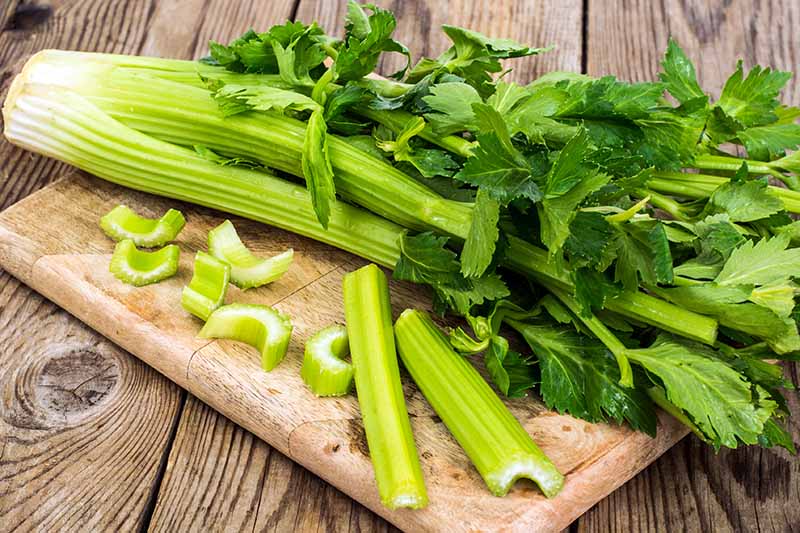
Celery is a nutritious, low-calorie addition to soups and stews and together with bell peppers and onions, is one of the “Holy Trinity” of Creole and Cajun cuisine. You can use your homegrown crop as a base for jambalaya or gobble up the crisp, crunchy stalks straight from the garden – with peanut butter, of course!
That’s what happened in our garden this year. All of our stalks have been consumed, much to our satisfaction, and we’re eagerly planning which varieties to sow next.
What’s your favorite type of celery to grow? Let us know in the comments below!
And remember to check out some of our other vegetable growing guides for more inspiration:
© Ask the Experts, LLC. ALL RIGHTS RESERVED. See our TOS for more details. Product photos via Burpee, Eden Brothers, Everwilde Farms, and True Leaf Market. Uncredited photos: Shutterstock.
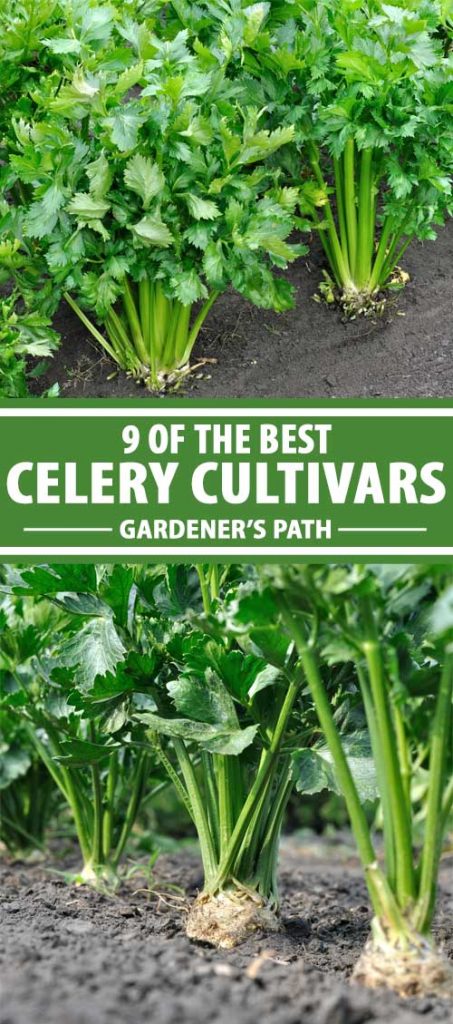

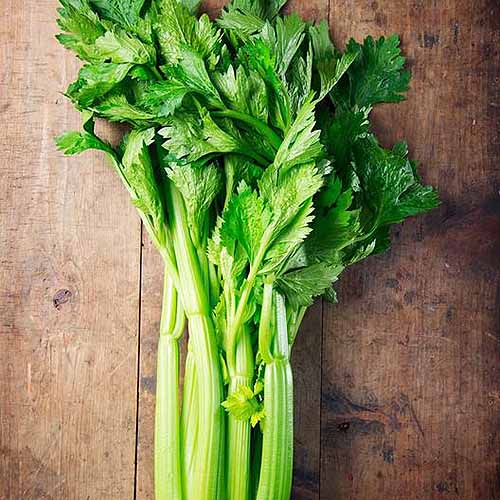
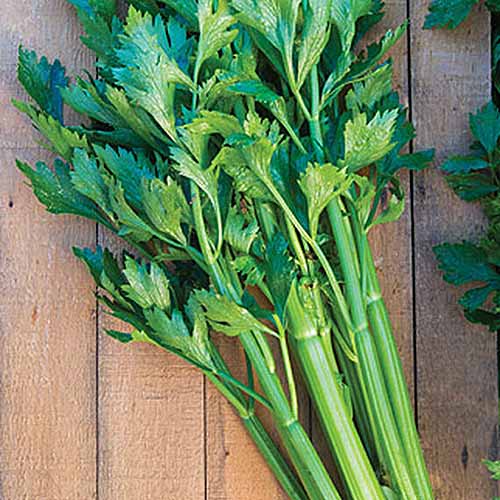



Great article on celery 🙂
One problem I see though – your picture for the 2nd variety is actually rhubarb!
Thanks for posting this 🙂
Hi Jeff – thanks for catching that! 🙂